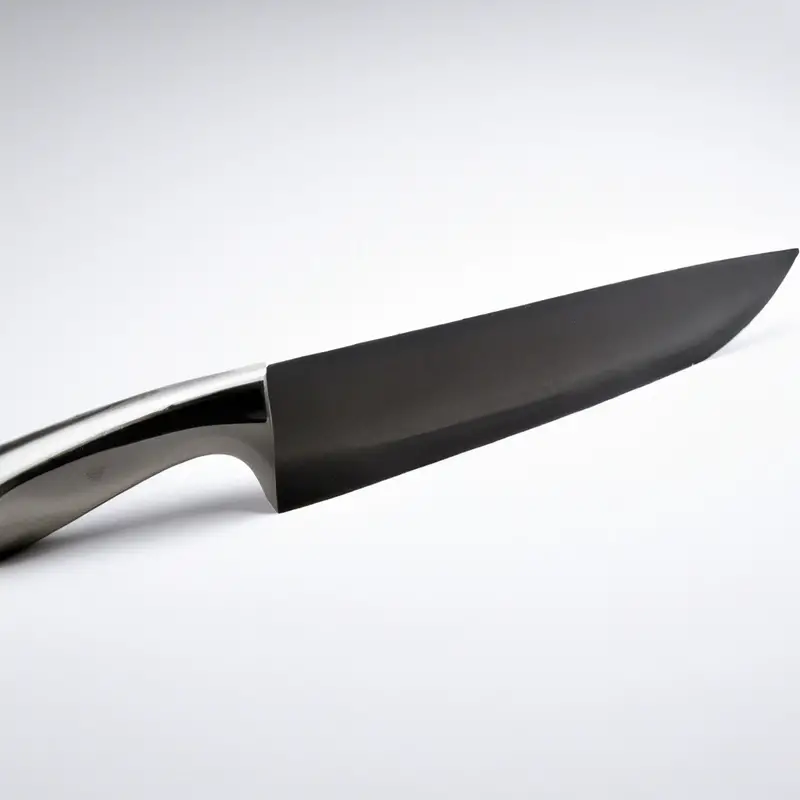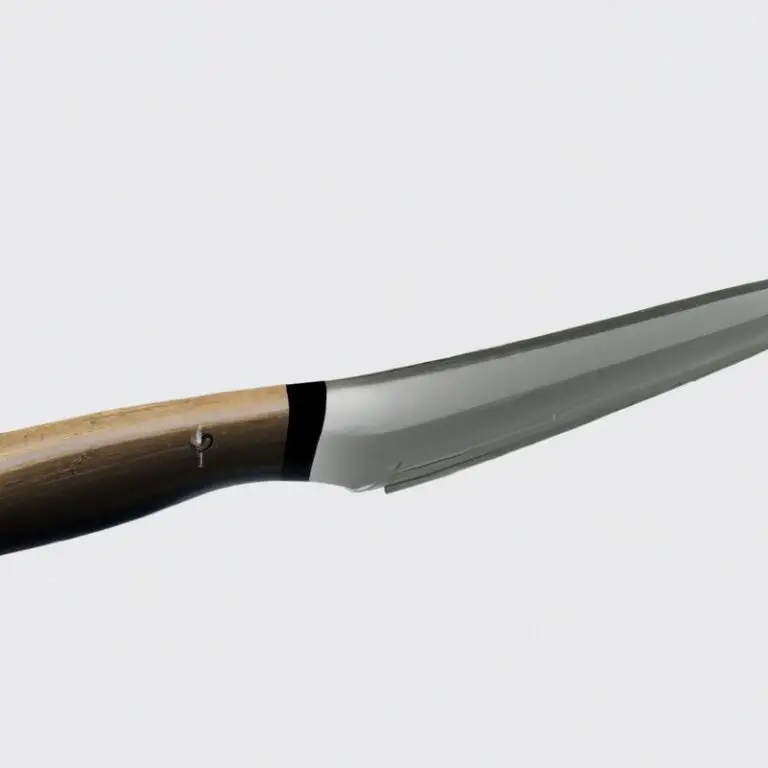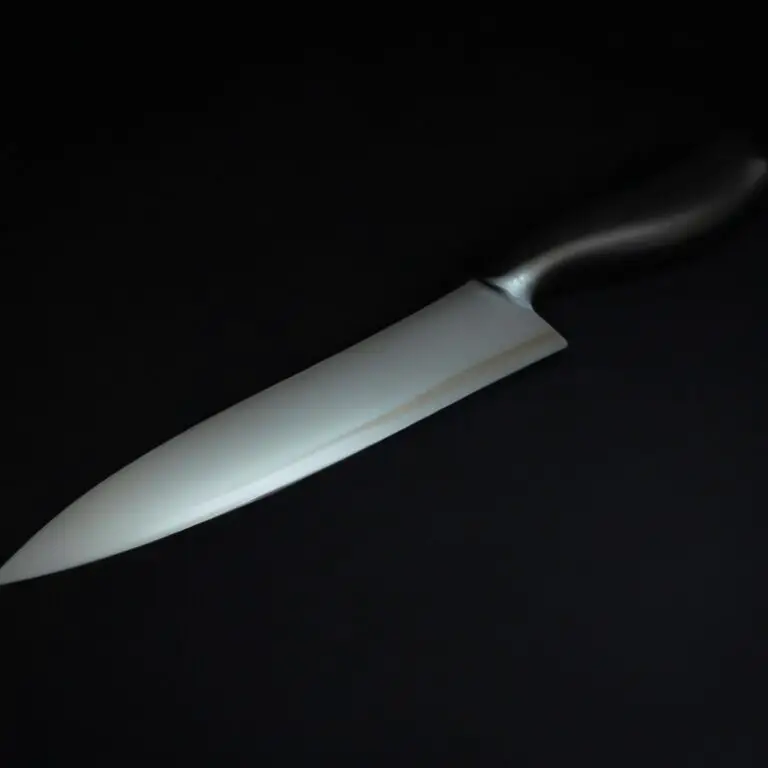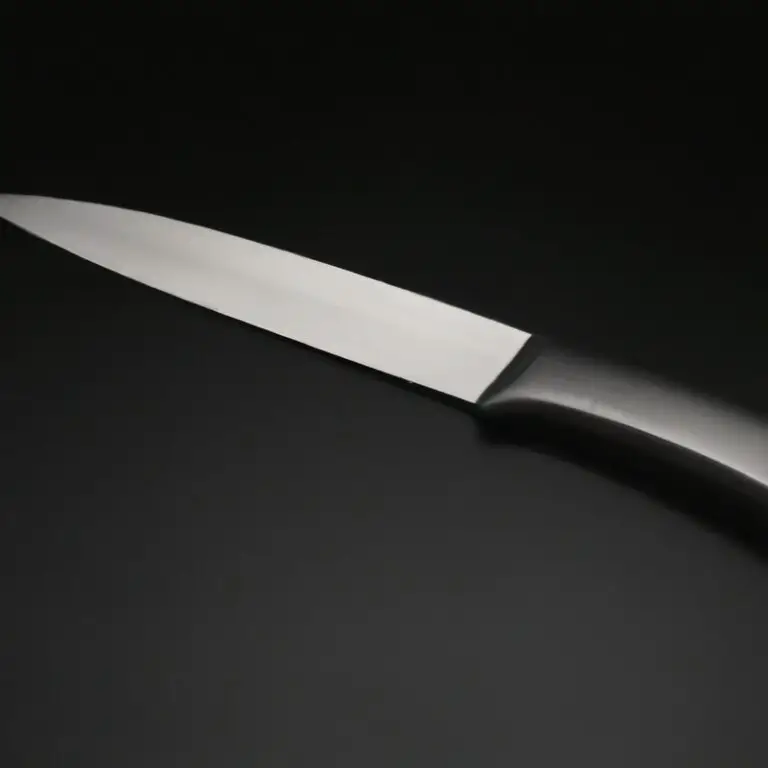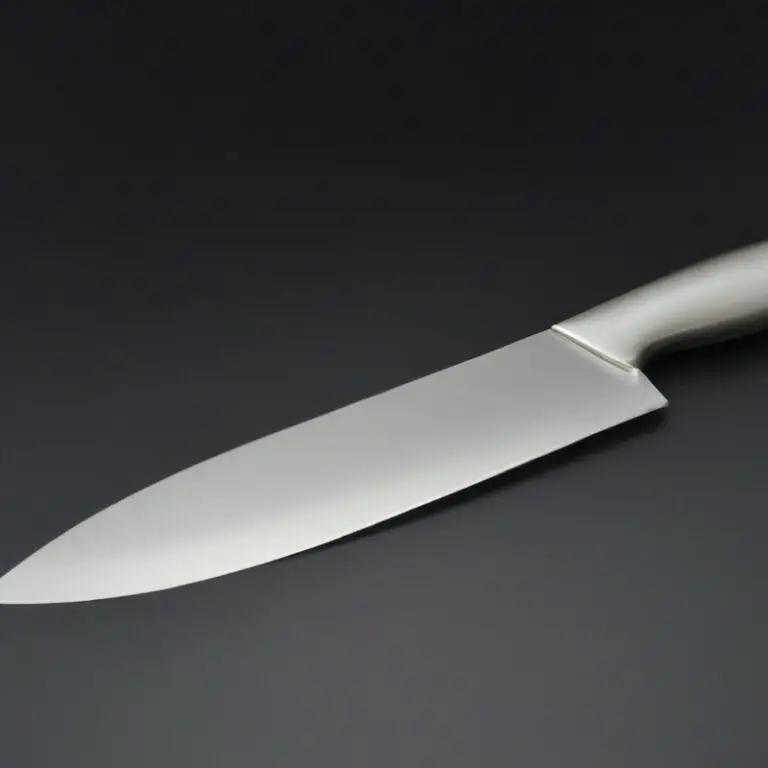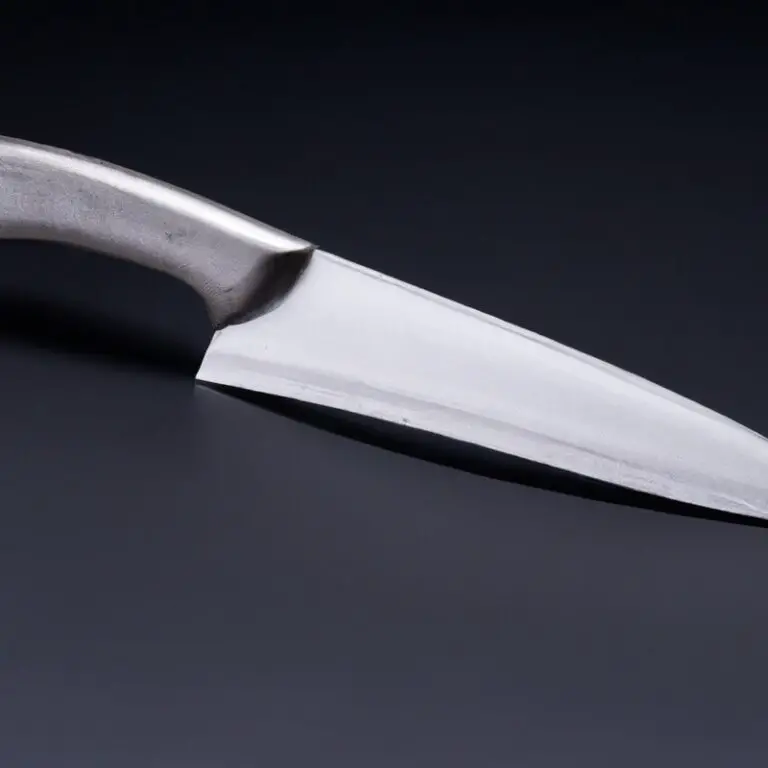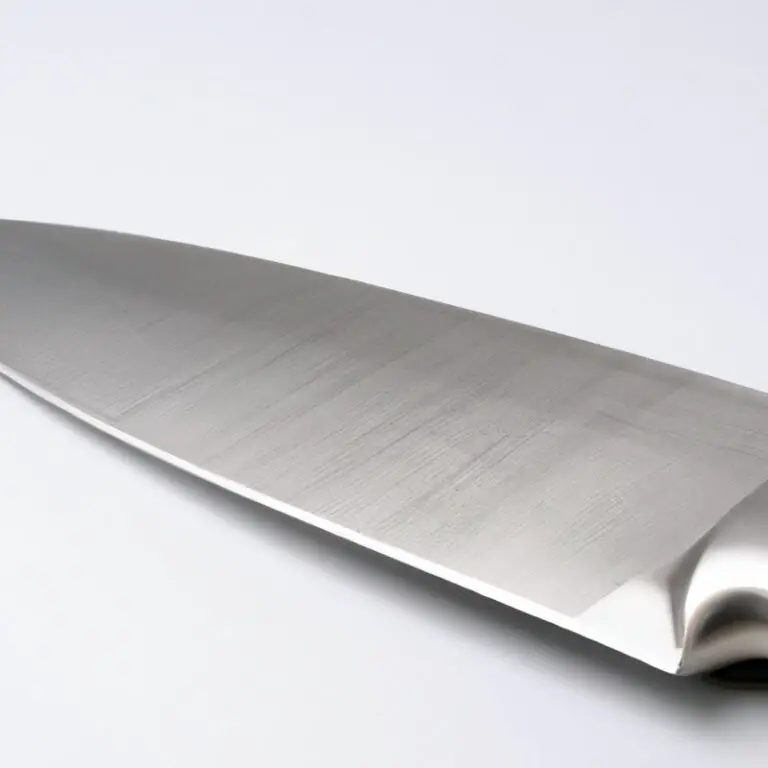Preserving Your Santoku Knife
Key Takeaways:
- Using a blade guard for your Santoku knife in a kitchen drawer ensures safety from any potential accidents.
- The blade guard also protects the sharpness and quality of the Santoku knife’s blade, extending its lifespan.
- Choose a high-quality blade guard that fits snugly on your Santoku knife to avoid any damage to the blade or the guard itself.
- Storing your Santoku knife with a blade guard in a kitchen drawer makes it easily accessible while also keeping it safe and secure.
If you are a home cook or professional chef, you know how crucial a good knife is to your work. And for many, one of the most essential knives in the kitchen is the Santoku knife – with its unique shape and razor-sharp edge, it’s perfect for slicing, dicing, and mincing.
But to keep your Santoku knife performing at its best, you need to protect it from damage and wear.
That’s where a blade guard comes in. In this article, I’ll explain why a blade guard is crucial for preserving your knife and the different types of blade guards available.
So, read on to find out how to keep your Santoku knife in top condition for years to come.
| Pros | Cons | |
|---|---|---|
| Protects blade from damage | ✔️ | ❌ |
| Prevents accidentally cutting fingers | ✔️ | ❌ |
| Keeps knife secure in drawer | ✔️ | ❌ |
| Takes up drawer space | ❌ | ✔️ |
| May be difficult to find the correct size guard for your knife | ❌ | ✔️ |
| Extra step to take knife in and out of guard | ❌ | ✔️ |
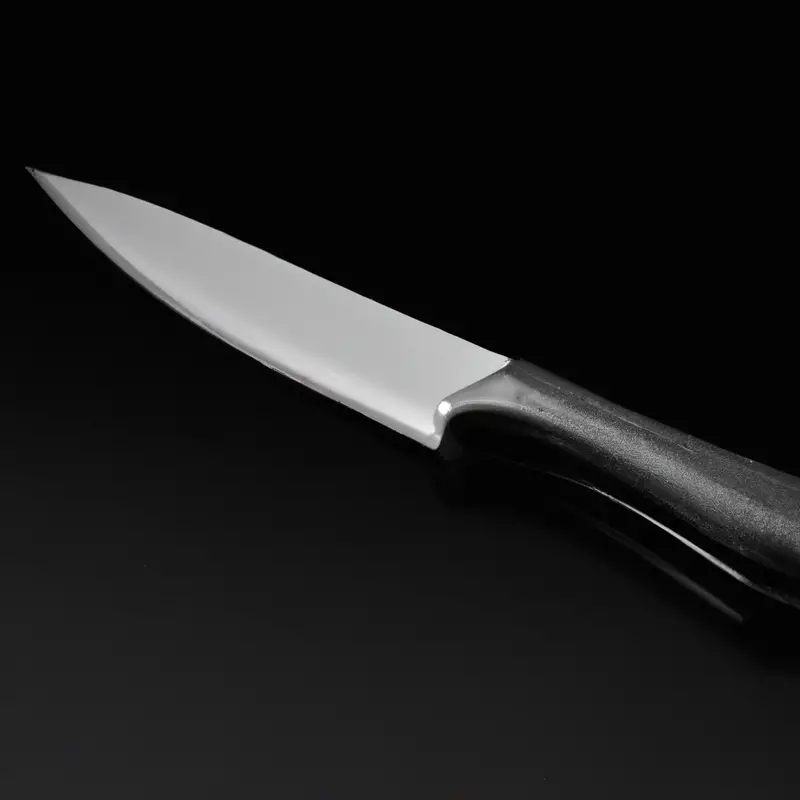
What is a Santoku knife? Understanding the unique features that make it a popular kitchen tool
A Santoku knife is a Japanese knife that has become a popular kitchen tool worldwide. It is a versatile and lightweight knife that is ideal for chopping, slicing, and dicing vegetables, fruits, and meats.
The word “Santoku” means “three virtues” or “three uses,” referring to the knife’s three primary cutting functions: slicing, dicing, and mincing.
The blade of a Santoku knife typically ranges from 5 to 7 inches and features a straight edge and a rounded tip. The knife’s unique flat blade profile allows for a rocking motion that makes it easier to chop and mince ingredients than a traditional Western knife.
The ergonomic handle provides excellent grip and control, making it a favorite among professional chefs and home cooks alike.
Understanding the unique features of a Santoku knife can help you choose the right blade guard and maintain your knife’s quality and longevity.
The importance of blade protection: Why a blade guard is crucial for preserving the quality of your Santoku knife
Using a blade guard is essential for protecting the quality of your Santoku knife. A blade guard serves as a protective cover that prevents the blade from coming into contact with other objects in a kitchen drawer or during transportation.
Without a blade guard, your knife is susceptible to nicks, scratches, and damage that can dull the blade and ultimately reduce its lifespan.
A quality blade guard can significantly extend the longevity of your Santoku knife, keeping it in peak condition for years to come.
Different types of blade guards: Examining the various options available for storing your Santoku knife
Blade guards come in different materials such as plastic, silicone, and steel. Plastic guards are lightweight and affordable, but may not offer the best protection against damage.
On the other hand, silicone guards are flexible, durable, and provide a snug fit for your knife.
Steel guards offer the most protection against possible damages, but they can be heavy and add extra weight to your knife. When selecting a blade guard, consider the size and shape of your Santoku knife, and choose the material that provides the best combination of protection and convenience for your needs.
The benefits of using a blade guard: How investing in a quality blade guard can save you time, money, and frustration
Using a blade guard can save you time, money, and frustration in the long run. Blade guards provide protection against accidental cuts and nicks, keeping your knife edges sharp and prolonging their lifespan.
Blade guards also prevent damage to the blade from exposure to air and moisture, reducing the need for costly repairs or replacements.
Additionally, using a blade guard eliminates the need to spend time searching for lost knives or untangling them from other utensils in a drawer. Investing in a quality blade guard can provide peace of mind and convenience while protecting your valuable kitchen tools.
Proper storage and maintenance of your Santoku knife: Tips for keeping your knife in top condition for years to come
To maintain the quality of your Santoku knife for years to come, proper storage and maintenance are necessary. Here are some tips to help you keep your knife in top condition:
- Always clean and dry your knife after each use. Never leave it wet or in a damp environment.
- Store your knife in a dry and secure place. Avoid placing it in a drawer with other utensils or in direct sunlight.
- Use a blade guard to protect the blade from damage or corrosion during storage.
- Sharpen your knife regularly to ensure it remains sharp and performs optimally.
- Avoid cutting hard materials like bones or frozen food with your Santoku knife to prevent damage to the blade.
By following these tips, you can ensure the longevity and top performance of your Santoku knife.
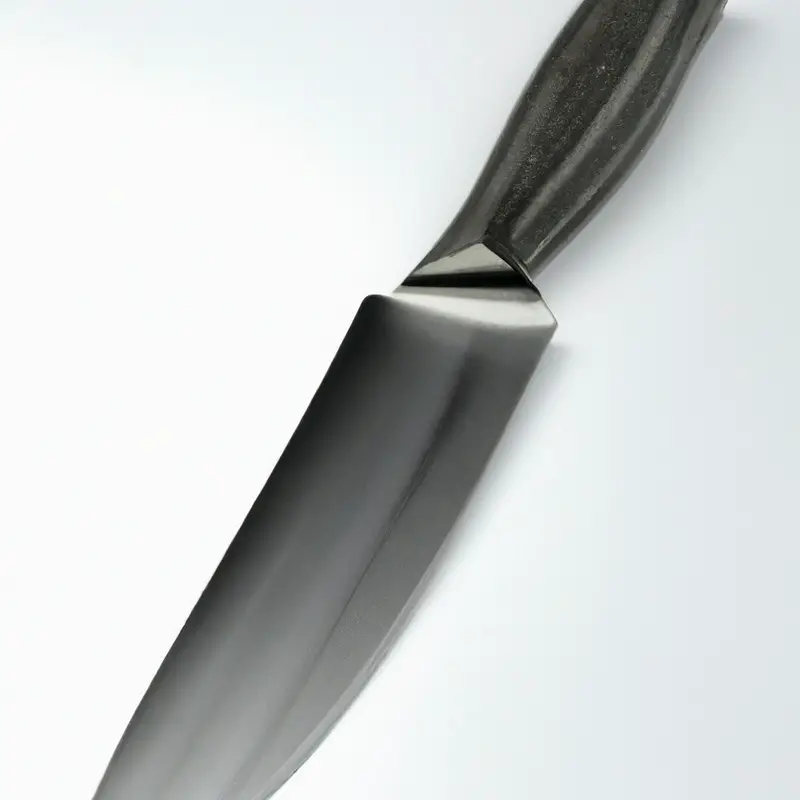
Choosing the right blade guard material: Comparing the pros and cons of plastic, silicone, and steel blade guards
Blade guards are available in different materials, each with pros and cons. Plastic blade guards are affordable and lightweight but may not provide proper protection.
Silicone blade guards are flexible and gentle on the knife, but may collect dirt and dust.
Steel blade guards are durable and offer excellent protection, but can be expensive. Choosing the right blade guard material depends on your preference, usage, and budget.
Consider investing in a quality blade guard that fits the size and shape of your Santoku knife to avoid damage and prolong its lifespan.
How to attach a blade guard to your Santoku knife: Step-by-step instructions for securing your knife safely in a storage sleeve
Attaching a blade guard to your Santoku knife is a simple process that takes only a few seconds. Follow these step-by-step instructions to secure your knife safely in a storage sleeve:
- Choose the right size: Ensure that your blade guard is the correct size for your Santoku knife. It should fit snugly over the blade without wobbling.
- Line up the knife: Hold the knife with the blade facing downwards, then slide the blade guard over the knife until it reaches the handle.
- Push down firmly: Once you have the blade guard over the blade, apply pressure on the top of the guard until it is fully secured.
- Make sure it’s secure: Check that the blade guard is tightly secured over the blade. If it isn’t, take it off and try again.
Attaching a blade guard to your Santoku knife is a vital step in protecting your blade from dulling, dust, and damage, which could compromise its effectiveness. With these easy steps, you can ensure that your knife stays in top condition for longer.
Storing multiple Santoku knives: Tips for organizing and protecting your knife collection with blade guards in a kitchen drawer
Storing multiple Santoku knives in a kitchen drawer can be a challenge without proper organization and protection. Using blade guards is a simple solution to keep your knife collection organized, safe, and in good condition.
Here are some tips for organizing and protecting your Santoku knives with blade guards in a kitchen drawer:
- Choose the right size blade guard for each knife: Make sure to measure the blade before buying a guard to ensure the perfect fit.
- Label each blade guard: Use a label maker or write the name of each knife on the guard to avoid confusion and keep the collection organized.
- Stack vertically: Store the knives in a vertical position with the handles facing up to reduce the risk of accidents and also to save space.
- Secure the blade guards: Ensure the blade guards are securely attached to the knives to prevent them from falling out or getting lost.
- Use a designated drawer: Store your Santoku knives and blade guards in a designated drawer to avoid damaging them and mixing them with other kitchenware.
By following these easy tips, you can keep your Santoku knives organized, protected, and ready to use.
Traveling with your Santoku knife: Why a blade guard is essential for transporting your knife safely during trips or moves
When traveling with a Santoku knife, it is essential to invest in a blade guard. A sturdy blade guard will prevent your knife from getting damaged during transportation and keep you and your luggage safe.
Without a blade guard, your knife’s sharp edges can easily scratch or pierce through fabric or other materials, causing potential harm to you and others.
Moreover, a blade guard provides a compact and secure way to store your knife while on the move. Opting for a quality blade guard will save you the anxiety and cost of purchasing a new knife and provide peace of mind on the go.
How to clean and sanitize your blade guard: Practices for maintaining the hygiene and longevity of your Santoku knife and storage sleeve
To maintain the hygiene and longevity of your Santoku knife and blade guard, you need to clean and sanitize them regularly. Here are some simple practices that you can follow:
- Remove any food debris or dirt from the blade guard and knife using a clean, damp cloth.
- Wash the blade guard and knife with mild soap and warm water.
- Use a small brush, such as a toothbrush, to clean hard-to-reach places.
- Rinse the blade guard and knife thoroughly with clean water and dry them with a clean towel.
- If you want to sanitize the blade guard and knife further, you can use a solution of one part white vinegar and one part water.
- Allow the blade guard and knife to air dry completely before putting them away.
By following these practices, you can prevent bacteria and germs from growing on your Santoku knife and blade guard, and keep them in good condition for years to come.
Final Verdict
In summary, investing in a quality blade guard for your Santoku knife is crucial for preserving its sharpness and preventing unnecessary damage. With various materials available, it’s important to choose the right one and properly attach it to your knife.
Keeping your knives organized and protected in a kitchen drawer is achievable by utilizing blade guards and practicing proper storage and maintenance.
Whether you’re a professional chef or a home cook, a blade guard is essential for safe transportation of your knife during travel. By following the tips outlined in this article, you can ensure that your Santoku knife stays in top condition for years to come.
Trust us, your culinary creations will thank you.

